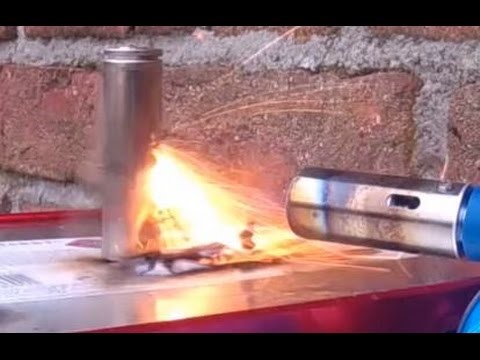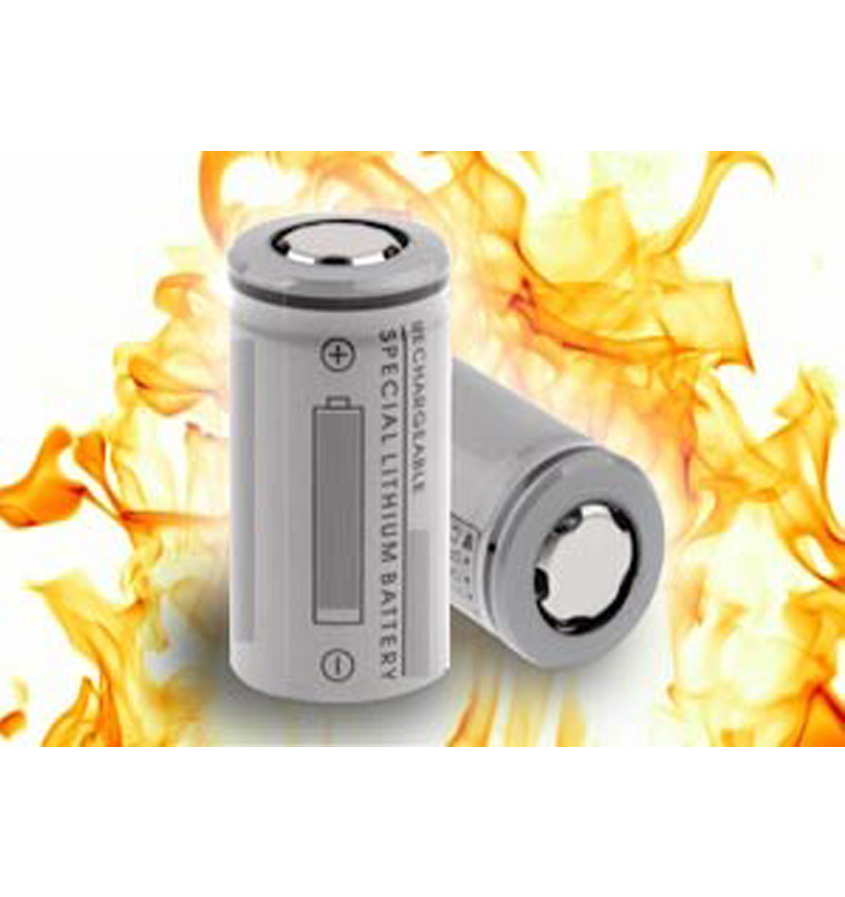Introduction
Lithium ion batteries are compact, lightweight batteries that hold considerable charge and fare well under constant discharge-recharge conditions. The batteries are found everywhere — in laptop computers, cameras, cell phones, and electric cars. Although accidents are rare, those that do occur may be spectacular, resulting in an explosion or fire. It can be seen that, theoretically, a highly exothermic redox reaction may occur in a lithium-ion battery, and the flammable electrolyte contained in it will also promote this reaction, resulting in combustion or even explosion.
Lithium-ion battery is an energy-containing component, which is mainly composed of positive electrode, negative electrode, electrolyte and separator. After charging, the positive electrode is generally a transition metal oxide, which has strong oxidizing properties; the negative electrode is graphite with a large amount of lithium embedded in it, which has strong reducibility. The electrolyte is generally organic ester, which has the characteristics of low melting point and flammability.
It should be noted that firecrackers in our lives are also energy-containing devices. Many people know that the composition of gunpowder in them is monosulfur (sulfur, chemical formula S) dinitrate (stone, chemical formula KNO3) three charcoals, of which salt peter is Strong oxidants, sulfur and charcoal are used as reducing agents. When a stimulus of more than 120 degrees is given by the outside world, the redox reaction in the firecracker occurs violently, releasing a large amount of gas and heat, the gunpowder burns, and the firecracker explodes.
It can be seen that, theoretically, a highly exothermic redox reaction may occur in a lithium-ion battery, and the flammable electrolyte contained in it will also promote this reaction, resulting in combustion or even explosion.
How powerful can a lithium-ion battery burn or explode? From the perspective of storing electrical energy, the electrical energy of an ordinary lithium-ion battery with an energy density of 150Wh/kg is about 1/10 of the energy density of the heat generated by the explosion of TNT explosives.
Research in recent years has conclusively proved that the positive and negative electrodes in lithium-ion battery accidents can directly undergo violent redox reactions under special circumstances, and even aluminium and copper current collectors can directly participate in the reaction in the form of reducing agents, and the heat generated is significantly higher than the corresponding energy stored in the battery. Generally speaking, when a safety accident occurs in a lithium-ion battery in a confined space, its maximum temperature can reach more than 800 °C, and the explosion heat of a 43.4g heavy lithium-ion battery when it explodes is equivalent to 5.45g TNT, which is 1/1 of the TNT equivalent. 8 .

The reason why lithium-ion batteries can controllably and continuously convert their internal chemical energy into electrical energy by means of electrochemical reactions instead of violent redox reactions is because the diaphragm effectively physically isolates the positive and negative electrodes and electronically conductive insulation (and the presence of an ionically conductive electrolyte). However, when the diaphragm fails due to various internal or external factors, and the positive and negative electrodes are in direct contact, this internal short circuit will cause the electric energy to be released instantaneously, generate a lot of heat and bring high temperature, which will instantly destroy the stability of the internal chemical system of the battery, resulting in The redox reaction between the negative electrolyte, the positive electrolyte, the negative electrode and the positive electrode, and even the current collector also participates, and the instantaneous exothermic temperature rises, causing the electrolyte to vaporize instantaneously, and then the positive and negative active material powders are sprayed out of the battery case. Bringing the consequences of burning or even explosion, this process is called thermal runaway (TR for short).
According to the statistics of electric vehicle accident scenarios in recent years, most of the accidents are due to “spontaneous combustion”, including when standing (the battery is not charged and discharged), while driving (the battery is discharged) and when charging. A small number of accidents occur when external heat sources, collisions and control circuits fail.
“Spontaneous combustion” is classified as spontaneous thermal runaway, which is collectively referred to as thermal runaway under various abuse conditions (thermal abuse, mechanical abuse, electrical abuse). Although the heating and People who liked this content also liked combustion mechanisms ultimately brought about by thermal runaway in the two scenarios are similar, the difficulty of researching them is quite different. At present, the thermal runaway under abuse conditions is controllable due to the controllable excitation conditions. In recent years, great progress has been made in research, which can basically quantitatively describe the mechanism of thermal runaway induced by various abuse conditions and the subsequent damage.
However, the spontaneous thermal runaway is difficult to study due to its complex and unpredictable causes, and the complete destruction of the battery after thermal runaway. It is difficult to restore the microscopic condition before thermal runaway.
Conclusion
Burning a lithium-ion battery will release toxic chemicals into the atmosphere that are harmful when inhaled or ingested. Do not smoke or burn materials around batteries containing acid or electrolytes. The acids can react violently with many substances, including each other and metals.
More Articles:
History of Lithium Battery Development,
Intercontinental Battery Circle,
Application of Isolation testing Technology,
Battery separator material,
POWER BATTERY SHELL WATERPROOF DESIGN,
Production problems of lithium batteries,
Aging Mechanisms of Li-ion Batteries.,
Principles of Power Battery System Design,

